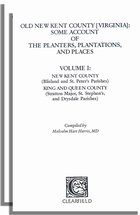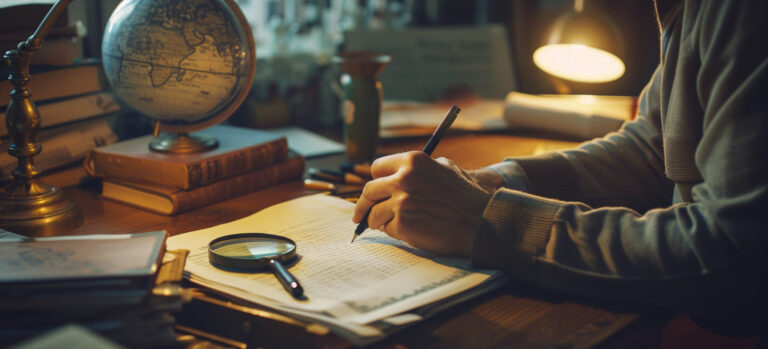
“Who Fired the First Shot,” by Jack Darrell Crowder
The American Revolution commenced with the faceoff between British regulars and the Patriot militia that occurred on April 18, 1775. To this day, no one can say with certainty who fired the first shot in that momentous engagement. Readers can make their own determination, however, thanks to the second of Jack Darrell Crowder’s new books on the War for Independence, The First 24 Hours of the American Revolution. An Hour by Hour Account of the Battles of Lexington, Concord, and the British Retreat on Battle Road. Following is a portion of Mr. Crowder’s account of the recollections and testimony provided by participants and witnesses on that fateful day:
Questions raised after the battle:
After the battle there were inquiries on both sides as to what happened. There were three questions that needed answers; were the Americans dispersing when fired upon, did they return fire, and who fired first? Each side had a different version of the events.
There was no doubt that the Americans did return fire. Accounts on both sides bear this out, plus the British had two wounded soldiers.
Were the Americans dispersing when fired upon? A British soldier recalled in a letter, “Colo. Smyth of the 10th ordered us to rush on them with our Bayonets fixed; at which time some of the Peasants fired on us, and our then returning the fire, the Engagement began.” According to this soldier’s account the Americans fired first and were not dispersing.
Joseph Underwood testified on March 7, 1825, “When the British were moving toward the colonists some of the men on seeing them started to back off. Captain Parker gave the order for every man to stand his ground, and he said he would order the first man shot that offered to leave his post. I stood very near Captain Parker when the Regulars came up, and am confident he did not order his men to disperse till the British troops had fired upon us the second time.”
Captain John Parker testified, “I ordered our Militia to meet on the Common in said Lexington to consult what to do, and concluded not to be discovered, nor meddle or make with said Regular Troops (if they should approach) unless they should insult or molest us; and, upon their sudden Approach, I immediately ordered our Militia to disperse, and not to fire: Immediately said Troops made their appearance and rushed furiously, fired upon, and killed eight of our Party without receiving any Provocation therefor from us.”
The British gave their version of who fired first: Major Pitcairn said he was turning to tell his men to disarm the colonists when he thought he saw a gun from behind a wall flash in the pan. Some witnesses among the regulars reported the first shot was fired by a colonial onlooker, who was behind a hedge or around the corner of a tavern.
Many of the British troops said the first shot came behind a hedge or stone wall. Some say from Buckman’s Tavern. There was even talk that someone acting under the orders of Samuel Adams fired the first shot.
The Americans gave their version of who fired first: According to Paul Revere and other witness the first shot was from a pistol. The British officers were the only ones likely to have pistols. Paul Revere heard and saw the shot, but was unable to tell who fired it. Revere knew Major Pitcairn well and knew that he did not fire the opening shot.
Benjamin Tidd and Joseph Abbott testified in 1775, “The regulars fired, first a few guns which we took to be pistols, from some of the regulars who were mounted on horses.” A deposition taken at Lexington April 25, 1775 by several minutemen that were present stated, ” some of our company were coming to the parade, with their backs towards the troops, and others on the parade began to disperse, when the regulars fired on the company, before a gun was fired by any of our company on them.”
A spectator named Timothy Smith said, “I saw the regular fire before on the Lexington Company before a gun was fired by any of our company on the regulars.” Some observers reported a mounted British officer firing first. Both sides generally agreed that the initial shot did not come from the men on the ground immediately facing each other.
On the One Year Anniversary of the Battle of Lexington, Pastor Clarke preached a sermon based upon his eyewitness testimony of the event. He called his sermon, The Fate of Blood-Thirsty Oppressors and God’s Tender Care of His Distressed People. He added this narrative to his printed sermon, “So far from firing first upon the King’s troops, upon the most careful enquiry, it appears that but a very few of our people fired upon the troops, they were wounded themselves, or saw others killed, or wounded by them; and looking upon it as next to impossible for them to escape.”
Participant-observers in Massachusetts sent the following depositions to the Second Continental Congress concerning what they saw at Lexington and Concord. The original document is from the Journals of the Continental Congress.
Lexington, April 25, 1775:
“I, Elijah Sanderson, above named, do further testifie and declare, that I was on Lexington Common, the Morning of the Nineteenth of April, aforesaid, having been dismissed by the Officers abovementioned, and saw a Large Body of Regular Troops advancing toward Lexington Company, many of whom were then dispersing. I heard one of the Regulars, whom I took to be an officer, say, “Damn them, we will have them,” and immediately the Regulars shouted aloud, Run and fired upon the Lexington Company, which did not fire a Gun before the Regulars Discharged on them; Eight of the Lexington Company were killed while they were dispersing, and at a Considerable Distance from each other, and Many wounded, and altho’ a spectator, I narrowly Escaped with my Life.”
Affidavit No. 2. Lexington, April 23, 1775:
“I, Thomas Rice Willard, of lawful age, do Testify and Declare, that being in the House of Daniel Harrington, of said Lexington, on the Nineteenth Instant, in the morning, about half an hour before sunrise, looked out at the window of said house, and saw (as I suppose) about four hundred Regulars in one Body, coming up the road, and marched toward the north part of the Common, back of the meeting-house of said Lexington; and as soon as said Regulars were against the east end of the meeting-house, the Commanding Officer said something, what I know not; but upon that the Regulars ran till they came within about eight or nine rods of about an Hundred of the Militia of Lexington, who were collected on said Common, at which time the Militia of Lexington dispersed; then the Officers made an huzza, and the private Soldiers succeeded them: Directly after this, an officer rode before the Regulars to the other side of the body, and hallooed after the Militia of said Lexington, and said, “Lay Down your Arms, Damn you, why Don’t you lay Down your arms?” and that there was not a Gun fired till the Militia of Lexington was Dispersed; and further saith not.”
For more information about The First 24 Hours of the American Revolution. An Hour by Hour Account of the Battles of Lexington, Concord, and the British Retreat on Battle Road, please CLICK HERE.
See Also Mr. Crowder’s other book, Women Patriots in the American Revolution.
Recent Blog Posts




